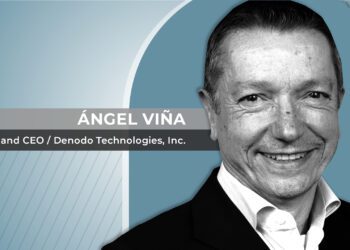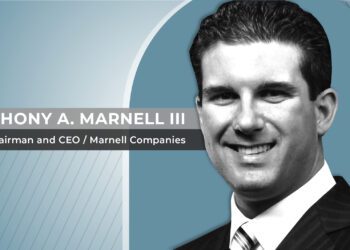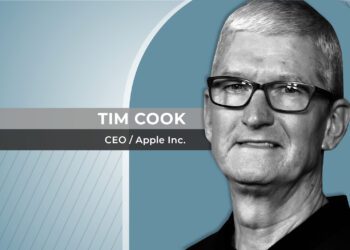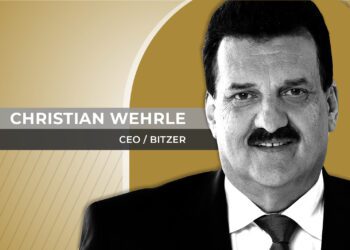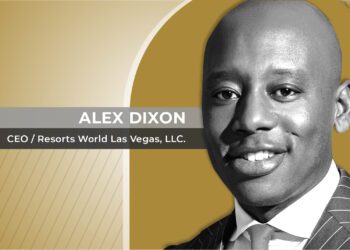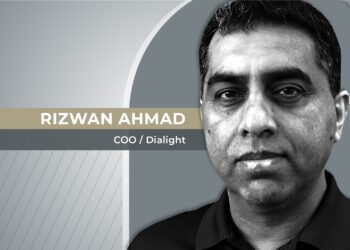Under Paul Warrenfelt’s management, T-Systems NA enables clients to better understand their journey into the new era.
Three goals.
After days-long meetings with the management of T-Systems in early 2014, when the company was just emerging from a complex financial situation and he was taking over from the previous Managing Director, Paul Warrenfelt agreed on three visions with his North American team to get the company where it needed to be.
The first one was to become the top choice for large enterprise customers in the markets where we choose to compete.We would do this by bringing our core values in line with our German brand of innovation, process orientation and a relentless focus on quality to the market.
The second was to win by focusing on specific offerings where we have a chance to differentiate ourselves from the competition in the hyper-competitive United Status market. We would do this primarily by bringing appropriate offerings from headquarters and in other cases we would do this by partnering.
The third thing that emerged from that meeting was an aspiration to become an excellent place to work for the best IT professionals.
“We worked on a very simple vision, but it was something that was attractive and compelling and proved to be a very important tool to make the team work together in the same direction.”


“I could say that over the years we have kept to that original vision as our guiding light (…) We have solidified ourselves as leaders in specific segments of the market and compete successfully with the largest and most innovative competitors. We have a very good position and also a great team of professionals working for us.”
Now, as the world dives into an increasingly complex digital transformation, the challenge for T-Systems is to leverage that position to become a reliable partner for customers entering the new technology-heavy paradigm, Warrenfelt adds.
For that to happen, one of the main challenges is to understand their clients’ business and to be able to foresee what that business is going to become going into the future. “This sounds very simple and easy but it’s really not, you have to really understand the business of the client.”
The right tech for the right user
Linked to that, T-Systems needs to understand all new technologies such as cloud computing and storage, mobility, the Internet of Things (IoT), Big Data and so on, to properly see how they can meet the different needs for different clients.
“The third and most important,” he added “is to be able to connect both parts, the business needs and the projection of these issues, to the future of the new technologies.”
If we are able to do that and if we can enable clients to understand their journey to transform the business to the new era, we will be of tremendous value for them.” To succeed at that, T-Systems’ team needs to make sure to listen to the client “to better understand what they’re really trying to do.
Second, it is important to manage a process-driven culture, we need every moment to behave according to the processes de ned, we need to be innovative but at the same time assure that there are no surprises (…) and clients of our clients are receiving what they are expecting,” he said.
The third thing, he adds, is that “we have to ensure that we create that team spirit within the organization, that we do not have isolated leaders or champions.”
“It sounds simple, but it’s not.”
Two different businesses
The company, the corporate customers unit of Deutsche Telekom, operates information and communication technology (ICT) systems for global corporations and public-sector institutions.
On its website, it says it is “pursuing the mission to shape the future of a connected business world and society by creating added value for customers, employees and investors through innovative ICT solutions.”
Looking forward, Warrenfelt said that even as they have been able to remain profitable and penetrate the premium sector of prestigious public and private companies, “now we have to manage that position in order to accelerate growth and to consolidate the vision and position that we already have.” T-Systems had revenues of around US$9.3 billion in 2016.
The company’s day to day operation consists mainly of two business units, one “flashier” than the other. The operations business handles infrastructure and applications for clients in a stable and efficient way.
This, the executive said, “is not glamorous, but if you are not able to do it, the impact among customers will be devastating. We tend to say that our services are behind what people use every day.
Our services make sure that these products are at the right time in the right place for the clients.
“This part of the business is mostly about reliability, cost and teamwork, he added. “The companies that are trusting in an IT services company to run their infrastructure have to be sure that we are not playing, and the only way is through a proven track record of stability and reliability.”
The flashy part of its business has to do with enabling transformation via the right technology mix for customers. “This is more progressive, it has a lot of impact, but we have a tremendous responsibility to be aware of the trends, and connect them to the client business needs, this creates a differentiation.”
The innovative part of the digital business can be exemplified by companies born out of the internet such as Uber, the ride-sharing app worth around US$41 billion despite owning no cars, and Air-B&B, which handles short-term rents of some 1.5 million rooms across the whole world despite owning not a single room.
An apparent simplicity
Warrenfelt mentions that one of the things that makes the work of an ICT company very challenging is the apparent simplicity of all of it.
New generations born into the Internet Age constantly demand more usability and functionality of their systems and devices. But even as things look even more simple and sophisticated on the surface, the underlying complexity skyrockets.
“This new digital society is very simple on the surface, simple for Millennials who think all is better and just have to use it (…) but if you go below the surface, there is still tremendous need of very solid, very reliable set of requirements that have to be handled by people committed to make sure that everything is up and running.”That’s T-Systems’ job.
Some of the public sector clients T-Systems serves represent this complexity well, as they are large entities with many different sets of requirements, where the need for standardization must strike a balance with their diverse sets of requirements. “If you do not make allowances, you will be fall short in covering the needs of your clients.”
To do that, the company needs the ability to create and sustain solid relationships with suppliers to handle the complexity, since no company has all the capabilities by itself.
For example, “if you want to provide a reliable service, you need reliable centers with high levels of security, otherwise you are dead.”
An example of one of these relationships is with NGA Human Resources. We have partnered to create the “Gold Standard” of Cloud Payroll operations. Another example is the relationship with Roambee, a Silicon Valley startup where our partnership delivers industry leading “on-demand” pay-per-use IoT services to customers.



